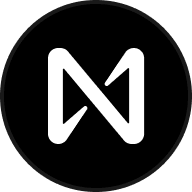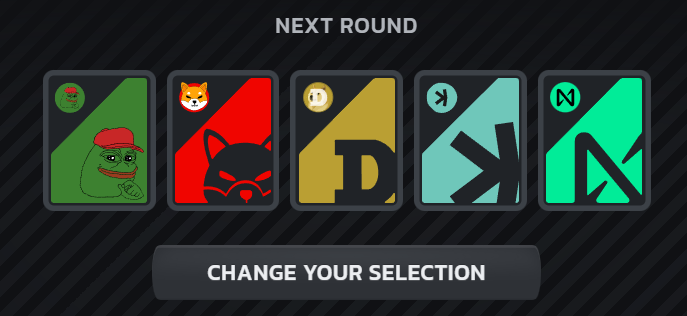Near Protocol-Preis
in USD

Über Near Protocol
Haftungsausschluss
OKX gibt keine Anlage- oder Vermögensempfehlungen. Du solltest gut abwägen, ob der Handel und das Halten von digitalen Assets angesichts deiner finanziellen Situation sinnvoll ist. Bei Fragen zu deiner individuellen Situation wende dich bitte an deinen Rechts-/Steuer- oder Anlagenexperten. Weitere Einzelheiten findest du in unseren Nutzungsbedingungen und der Risikowarnung. Durch die Nutzung der Website eines Drittanbieters („TPW“) akzeptieren Sie, dass jegliche Nutzung der TPW den Bedingungen der TPW unterliegt. Sofern nicht ausdrücklich schriftlich angegeben, steht OKX einschließlich seiner verbundenen Unternehmen („OKX“) in keinerlei Verbindung zum Eigentümer oder Betreiber der TPW. Sie stimmen zu, dass OKX nicht für Verluste, Schäden oder sonstige Folgen haftet, die sich aus Ihrer Nutzung der TPW ergeben. Bitte beachte, dass die Nutzung einer TPW zu einem Verlust oder einer Minderung deiner Assets führen kann. Das Produkt ist möglicherweise nicht in allen Ländern verfügbar.
Preisentwicklung von Near Protocol
Near Protocol auf Social Media
Anleitungen

Erstelle ein kostenloses OKX-Konto.
Zahle Gelder auf dein Konto ein.
Wähle deine Krypto aus.
Häufig gestellte Fragen zum Near Protocol-Preis
Near Protocol ist eine hochmoderne Layer-1-Blockchain-Plattform, die dank ihres Sharding-Mechanismus für ihre Skalierbarkeit und schnelle Transaktionen bekannt ist.
Near Protocol beinhaltet Sharding, eine Technik, die das Netzwerk in kleinere Segmente (oder Shards) unterteilt und so die Transaktionsgeschwindigkeit und die Gesamtleistung des Netzwerks optimiert.
Kaufen Sie NEAR-Token einfach auf der OKX-Kryptowährungsplattform. Zum OKX-Spot-Handelsterminal gehören die verfügbaren HandelspaareNEAR/BTC,NEAR/USDCundNEAR/USDT.
Sie können NEAR auch mit über 99 Fiat-Währungen kaufen, indem Sie „Express-KaufOption. Andere beliebte Krypto-Token, wie z. B.Bitcoin (BTC),Ethereum (ETH),Tether (USDT)undUSD Coin (USDC), sind auch verfügbar.
Darüber hinaus können Sie Ihre vorhandenen Kryptowährungen tauschen, einschließlichXRP (XRP),Cardano (ADA),Solana (SOL)undChainlink (LINK), für NEAR ohne Gebühren und ohne Preis-Slippage durch NutzungOKX Konvertieren.
Um die geschätzten Echtzeit-Konvertierungspreise zwischen Fiat-Währungen wie USD, EUR, GBP und anderen in NEAR anzuzeigen, besuchen SieKrypto-Konverter-Rechner von OKX. Die Krypto-Börse mit hoher Liquidität von OKX gewährleistet die besten Preise für Ihre Kryptokäufe.
Tauch tiefer ein in Near Protocol
Im Jahr 2020 verzeichnete der dezentrale Finanzsektor (DeFi) ein deutliches Wachstum, was zu einem Anstieg dezentraler Anwendungen (dApps) im Ethereum-Netzwerk führte. Dieser Anstieg verdeutlichte einige der Skalierbarkeitsprobleme von Ethereum und verdeutlichte die Notwendigkeit einer robusteren Lösung. Als Reaktion auf diesen Bedarf entwickelte sich Near Protocol zu einer gemeinschaftsorientierten Cloud-Computing-Plattform mit dem Ziel, diese Einschränkungen zu mildern.
Was ist Near Protocol?
NEAR ist eine von der Community betriebene Cloud-Computing-Plattform, die den Proof of Stake (PoS)-Konsensmechanismus übernimmt. Mit seiner benutzerfreundlichen Oberfläche und den Smart-Contract-Funktionen möchte NEAR Entwickler in die Lage versetzen, mühelos innovative dApps und DeFi-Lösungen zu entwerfen und bereitzustellen. Darüber hinaus ermöglicht sein einzigartiges Design Benutzern, mit dApps und Smart Contracts zu interagieren, ohne eine Wallet zu benötigen.
Das Near Protocol-Team
Erik Trautman, ein Unternehmer mit Erfahrung an der Wall Street und Gründer von Viking Education, war der Pionier von NEAR. An seiner Seite sind die Mitbegründer Illia Polusukhin, eine ehemalige Google-Mitarbeiterin, und Alexander Skidanov, ein ehemaliger Microsoft-Mitarbeiter. Unter ihrer Führung hat NEAR eine qualifizierte Kohorte von Entwicklern zusammengestellt, darunter Goldmedaillengewinner des International Collegiate Programming Contest.
Wie funktioniert das Near Protocol?
Mithilfe der Sharding-Technologie verbessert NEAR die Transaktionsgeschwindigkeit und das Transaktionsvolumen. Durch die Verteilung seiner Rechenlast auf mehrere Shards führt jeder Knoten nur den relevanten Code für seinen zugewiesenen Shard aus, wodurch die Skalierbarkeit optimiert wird. Das auf JavaScript basierende Blockchain-Betriebssystem (BOS) von NEAR stellt sicher, dass Entwickler eine vertraute Programmiersprache verwenden können. Die Plattform stellt vorgefertigte Komponenten bereit und ermöglicht so eine schnellere Produktentwicklung. Darüber hinaus können Benutzer schnell auf das System zugreifen, ohne Kryptowährungen besitzen oder verwenden zu müssen.
NEAR Tokenomik
Der native Token von NEAR, NEAR, wurde am 13. Oktober 2020 mit einem Gesamtangebot von 1 Milliarde Token eingeführt. Der Token bietet mehrere Anwendungsfälle, von der Zahlung von Transaktionsgasgebühren bis hin zum Einsatz für Belohnungen. Darüber hinaus spielt es eine Rolle bei der Governance, der Datenspeicherung und dem Zugriff auf Dienste und Anwendungen im Near Protocol.
NEAR-Verteilung
NEAR wurde auf folgende Weise verteilt:
- 17,2 Prozent: Gemeinschaftszuschüsse und -programme
- 15,23 Prozent: Seed-Runde
- 14 Prozent: Hauptbeitragende
- 11,76 Prozent: Frühe Ökosystementwicklung
- 11,4 Prozent: Betriebszuschüsse
- 12 Prozent: Community-Verkäufe
- 10 Prozent: Stiftung
- 8,41 Prozent: Venture-Runde
Near Protocol: Der Weg in die Zukunft
NEAR ist auf Robustheit und Effizienz ausgelegt und bietet eine Plattform ohne Zwischenhändler, die es Benutzern ermöglicht, Anwendungen unabhängig zu veröffentlichen und zu hosten. Dieses Engagement für den Fortschritt spiegelt sich in ihrer Ankündigung für das dritte Quartal 2023 wider, in der Phase 2 des Shardings eingeläutet wird, um den Sharding-Prozess zu verbessern und die Skalierbarkeit zu verbessern.
ESG-Offenlegung









































